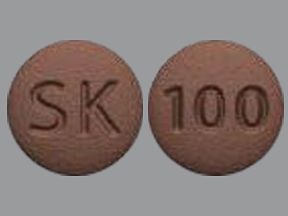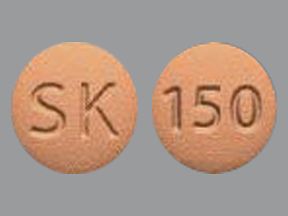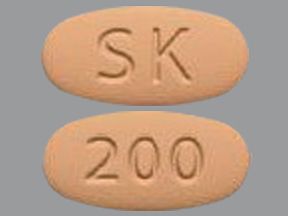Xcopri (cenobamate) is a prescription drug used to treat focal onset seizures. The drug comes as a tablet. You’ll usually take it once per day.
Xcopri is used to treat focal onset seizures (also known as partial seizures) in adults. It belongs to a group of drugs called antiepileptic drugs.
Xcopri comes as a tablet that you swallow. Its active ingredient is cenobamate. An active ingredient is what makes a drug work.
This article describes the dosages of Xcopri, as well as its strengths and how to take it. To learn more about Xcopri, see this in-depth article.
This section describes the typical dosages of Xcopri, as well as its form and strengths.
When you’re first prescribed Xcopri, your doctor will begin with a starting dosage and then gradually increase it over several weeks until you reach your maintenance dosage.
The table below highlights the basics of Xcopri’s usual dosing schedule. Dosages are listed in milligrams (mg). Be sure to read on for more details.
| Weeks of treatment | Daily dosage |
| 1 and 2 | 12.5 mg |
| 3 and 4 | 25 mg |
| 5 and 6 | 50 mg |
| 7 and 8 | 100 mg |
| 9 and 10 | 150 mg |
| 11+ | 200 mg |
What is Xcopri’s form?
Xcopri is available as a tablet that you swallow.
What strengths does Xcopri come in?
Xcopri tablets come in the following strengths:
- 12.5 mg
- 25 mg
- 50 mg
- 100 mg
- 150 mg
- 200 mg
What are the usual dosages of Xcopri?
The information below describes dosages that are commonly used or recommended. But be sure to take the dosage your doctor prescribes for you. They’ll determine the best dosage to fit your needs.
Dosage for focal onset seizure
When you first start taking Xcopri, your doctor will recommend a dose titration. This means that your doctor will gradually increase your dose until you reach a maintenance dosage that’s right for you. This slow increase of your dose over time gives your body time to adjust to the medication and decreases the risk of side effects.
For the first 2 weeks of treatment, you’ll likely take 12.5 mg of Xcopri once per day. After that, your dose will be increased every 2 weeks until your seizures are well managed. Your doctor will also monitor you for side effects as your dose is increased.
- Weeks 1 and 2. One dose of 12.5 mg per day.
- Weeks 3 and 4. One dose of 25 mg per day.
- Weeks 5 and 6. One dose of 50 mg per day.
- Weeks 7 and 8. One dose of 100 mg per day.
- Weeks 9 and 10. One dose of 150 mg per day.
- Weeks 11 and 12. One dose of 200 mg per day.
The recommended maintenance dosage is 200 mg taken once daily. But depending on how your body responds to the medication, your doctor may choose to continue increasing your dose every 2 weeks by 50 mg. For example, your doctor might recommend that you take a dose of 250 mg per day for weeks 13 and 14 and a dose of 300 mg per day for weeks 15 and 16.
The maximum recommended dosage of Xcopri is 400 mg per day.
Is Xcopri used long term?
Yes, Xcopri is usually used as a long-term treatment. If you and your doctor determine that it’s safe and effective for your condition, you’ll likely take it long term.
Dosage adjustments
If you have liver disease, the maximum recommended dosage of Xcopri is typically lowered to 200 mg once per day. The drug is generally not recommended for people who have severe liver disease or liver failure.
If you have kidney disease, your doctor may consider lowering your dosage. But if you have end stage kidney disease and are on dialysis, your doctor will likely recommend a different treatment for you.
The dosage of Xcopri you’re prescribed may depend on several factors. These include:
- how your seizures respond to the medication
- whether you experience side effects
- other conditions you may have (see “Dosage adjustments” just above)
Xcopri is a tablet that’s taken once daily. It can be taken with or without food.
Xcopri should be swallowed whole. Do not crush, chew, or dissolve the tablet. If you have trouble swallowing tablets, see this article for tips on how to take this form of medication.
For information on the expiration, storage, and disposal of Xcopri, see this article.
Accessible drug containers and labels
Some pharmacies provide medication labels that:
- have large print or use braille
- feature a code you can scan with a smartphone to change the text to audio
Your doctor or pharmacist may be able to recommend pharmacies that offer these accessibility features if your current pharmacy doesn’t.
If you have trouble opening medication bottles, let your pharmacist know. They may be able to supply Xcopri in an easy-open container. They may also have tips to help make it simpler to open the drug’s container.
If you miss a dose of Xcopri, take it as soon as you remember. However, if it’s almost time for your next scheduled dose, skip the dose. You should not take two doses of Xcopri at once to make up for a missed dose. If you miss a dose and you aren’t sure whether you should take the missed dose, talk with your doctor or pharmacist.
If you need help remembering to take your dose of Xcopri on time, try using a medication reminder. This can include setting an alarm or downloading a reminder app on your phone.
Do not take more Xcopri than your doctor prescribes, as this can lead to serious side effects.
What to do in case you take too much Xcopri
Call your doctor right away if you think you’ve taken too much Xcopri. You can also call 800-222-1222 to reach America’s Poison Centers or use its online resource. But if you have severe symptoms, immediately call 911 (or your local emergency number) or go to the nearest emergency room.
Xcopri may cause dependence. With dependence, your body needs the drug to function as usual. If you suddenly stop taking Xcopri, you may experience withdrawal symptoms, such as:
- insomnia (trouble sleeping)
- decreased appetite
- depression
- tremor
- amnesia
In addition, suddenly stopping an antiepileptic drug, including Xcopri, increases your risk of seizures and status epilepticus.
For these reasons, if you and your doctor decide that you should stop taking Xcopri, it’s safer to do so using a drug taper.
With a drug taper, your dosage is gradually decreased over a couple of weeks. If you develop any withdrawal symptoms, your dosage may be briefly increased again, and then the taper started again at a slower pace. This will all be done under the supervision of your doctor.
The sections above describe the usual dosages provided by the drug’s manufacturer. If your doctor recommends Xcopri for you, they’ll prescribe the dosage that’s right for you.
Remember, you should not change your dosage of Xcopri without your doctor’s recommendation. Only take Xcopri exactly as prescribed. Talk with your doctor if you have questions or concerns about your current dosage.
Some examples of questions you may want to ask your doctor include:
- Should my dosage of Xcopri increase if I still have seizures?
- How do different dosages of Xcopri affect my risk of side effects?
- Does my dosage of Xcopri need to change if I’m taking other antiepileptic drugs with it?
To get information on different conditions and tips for improving your health, subscribe to any of Healthline’s newsletters. You may also want to check out the online communities at Bezzy. It’s a place where people with certain conditions can find support and connect with others.
Disclaimer: Healthline has made every effort to make certain that all information is factually correct, comprehensive, and up to date. However, this article should not be used as a substitute for the knowledge and expertise of a licensed healthcare professional. You should always consult your doctor or another healthcare professional before taking any medication. The drug information contained herein is subject to change and is not intended to cover all possible uses, directions, precautions, warnings, drug interactions, allergic reactions, or adverse effects. The absence of warnings or other information for a given drug does not indicate that the drug or drug combination is safe, effective, or appropriate for all patients or all specific uses.












